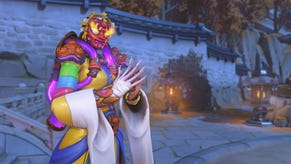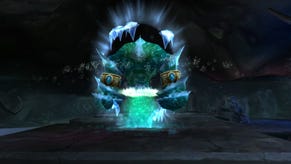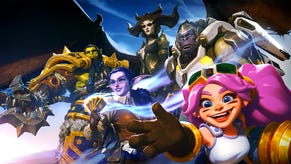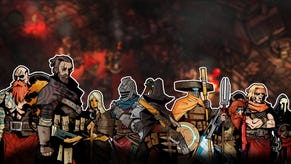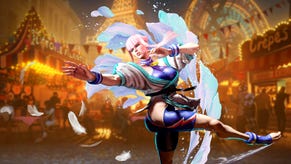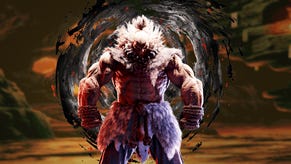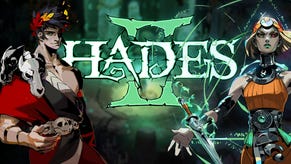Comfort Food Games: World of Warcraft
Mike explores one of the games that he can't put down, his refuge in times of stress or boredom: Blizzard's World of Warcraft.
This article first appeared on USgamer, a partner publication of VG247. Some content, such as this article, has been migrated to VG247 for posterity after USgamer's closure - but it has not been edited or further vetted by the VG247 team.
Over the years, we've all purchased and played a number of games, but there are a few titles that stick with us. Games that you pull out and play when you have a really bad day, when you're depressed, or when you're just plain bored. Games that act like comfort food; they may not always be good, but they resonate with you for some reason.
Comfort Food Games is a new series of articles where the USgamer team explores the games that we return to time and time again. The games that make us happy and help us forget about the rest of the world every time we hit 'start' or 'enter'. The titles that we've probably purchased again and again on different platforms. Mike kicks the series off with his feelings on Blizzard Entertainment's World of Warcraft.
I've been playing World of Warcraft since November 23, 2004, the game's launch date.
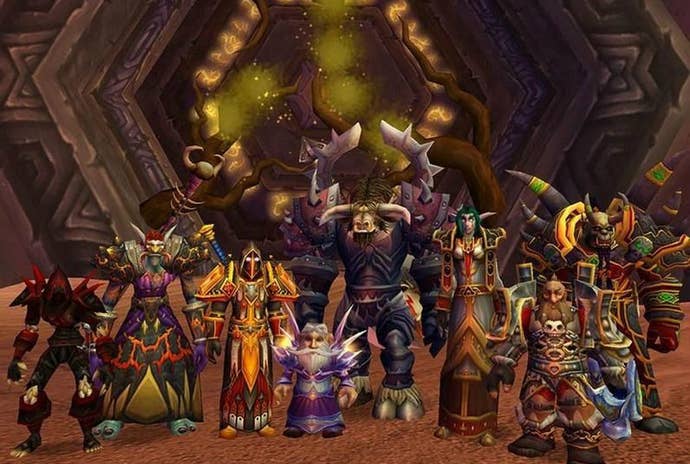
I know this because when I purchased my boxed copy of the game, I put the receipt inside. It's still there, slightly crumpled and yellowed with age. Now, I can't be 100 percent exact on the real date I was finally able to log into the game; World of Warcraft had the same launch week teething troubles that most massively-multiplayer online role-playing games go through. As a general date, it's good enough for me.
By November of this year, I will have been playing World of Warcraft for a decade. I've been paying Blizzard Entertainment $15 a month for the privilege for nearly ten years, which adds up to a number I probably don't want to think about. I admit, I haven't been subbing for every month of those ten years. I went through rough patches when I was younger where I couldn't afford it. I'll occasionally leave for a month or two to play another subscription MMO, taking my monthly fee with me, but when I stop playing the new hotness, I come back to WoW. My MMO subscription price is just factored in my monthly bills at this point; it's something I don't think about, like my Netflix, Spotify, and web hosting bills.
Back in WoW's heyday, you could run into 20 people who played the game, ask them what server they played on, and get 20 different answers. I don't think I ever met someone who was actually on my server at the time and I've hopped occasionally. The Horde races weren't within my aesthetic preferences, so my first character was on the Alliance, a gangly Night Elf Hunter. (I didn't go human because I dislike how skin tones like mine interact with Blizzard's hair and face choices.) I didn't last long, only getting to around level 30. In fact, I just logged into that character only to realize that I left him in Southshore, which became Horde territory with the Cataclysm expansion. Oops.
No, the beginnings of my real affinity for the game began with the 2007 release of Burning Crusade. The addition of the Blood Elves fixed my problem with racial choices, while still allowing me to be in the infinitely-badass Horde. (Let your colors fly, folks!) In Burning Crusade, I had a strong group of friends to play with and a new server to play on, so I took it all the way up to level cap that time. My Blood Elf was a Paladin and my chosen spec was Protection. As a tank - we all know who's the most important remember of the holy trinity - I joined a guild and began to get deeper into the PVE game.
Thus began my time with hardcore raiding, the treadmill that never stops.
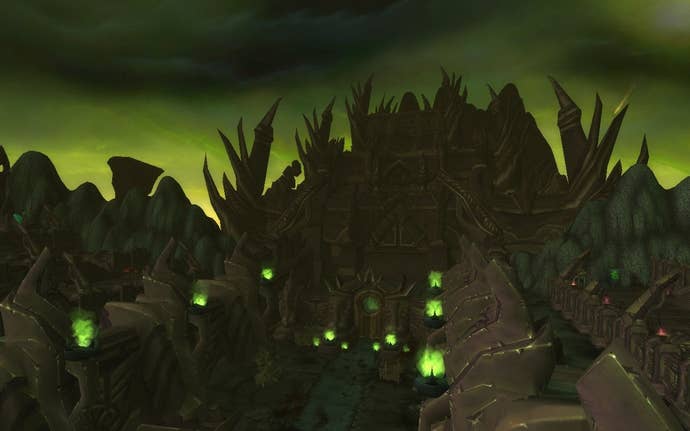
I remember the days of collecting flasks. Of running 5-man dungeons like Hellfire Ramparts, Shattered Halls, Underbog, and Escape from Durnholde again and again to gear up. Once I was geared up, I ran Gruul, Magtheridon, Mt. Hyjal, Tempest Keep, and the Black Temple for Tier gear. I can close my eyes and see the late-night runs of the 10-Man dungeon Karazhan, which is still one of my favorites to this day. I fondly recall flying to the locations of these dungeons out in the world with a few guildmembers, so we could summon the other players to our location. Gathering 20 players together and having to Paladin blessing the entire group before each attempt. Finding out one player hadn't finished their attunements yet. Many of these names and situations will mean nothing to most people, but to those that have played World of Warcraft, they probably cause flashbacks. Reminiscence about times where you didn't get the drop you wanted after 20th kill, or all the wipes you went through before you succeeded. The Random-Number God is capricious and cruel.
The MMO hardcore always consume content faster than game operators can create it. And we consumed. I remember running Zul'Aman, a dungeon launched in patch 2.3. It had a mechanic that rewarded players with a rare mount for finishing the instance under a certain time limit. One evening, we made it to the final boss, Daakara. It was midnight and I had work the next morning, but 3am rolled around and we still hadn't taken that bastard down. It was the worse kind of PVE situation, where we got him so close to death, but still wiped. Being somewhere in the near vicinity of victory makes you do stupid things, like trying again. Raiders of any MMO probably understand my pain. I never did get my bear mount. Magister's Terrace and Sunwell Plateau followed soon after.
By the time Wrath of the Lich King launched in 2008, I was an experienced tank. Wrath and its subsequent patches brought a whole new host of changes to the PVE game. Dual-specialization meant I could be a tank and a healer on my Paladin, so that's what I did; my time in dungeon queues was never that long. Blizzard played around with the formula it had previously established: Trial of the Champion was a 5-man dungeon with only bosses and the Obsidian Sanctum was a single raid boss with variable difficulty and rewards depending on how many of his lieutenants you killed first. Raids could be 10 or 25-man runs now, with 10-man runs making things easier on my guild. The addition of achievements meant players had new challenges, like killing Trial of the Crusader's Acidmaw and Dreadscale within 10 seconds of each other, or killing Patchwerk in the reborn Naxxramas in less than 3 minutes.

Fluid hard modes were cemented in the raid dungeon Ulduar; by doing certain things in boss encounters, players could face a harder version of that encounter. Kill XT-002's exposed heart and his damage and health increases. Finish the Assembly of Iron is a certain order, for a more difficult encounter. Early on, players would find out about these hard modes on accident. There's nothing like being an unprepared tank when a hard mode activates, because bosses tend to hit a lot harder; those moments where you take two to three hits, die, and hear your healer ask over voice chat "what happened?" I remember them well, and the repair bills that followed.
I was also big into crafting, specifically Jewelcrafting. I had, through painstaking time and effort, collected all the available patterns. I was paying Miners to regularly bring me ore, prospecting it, and spending a great deal of time on the Auction House. In fact, at some point I was probably logging into the game just to play the Auction House, not for the game itself. Posting tons of auctions, undercutting the competition, buying them out; I understand why financial traders love playing the market.
When Cataclysm rolled out in 2010, I was firmly in the throes of a "real job". There were big changes afoot like the addition of the Goblin and Worgen races, but I had dropped off the hardcore raiding kick. I rolled a Goblin Shaman and took my time. I had less space in my life for WoW. When Mists of Pandaria launched two years later, my old friends had moved on, my guild was gone, and life was getting busier. At the end of last year, I started anew. I created a Human Paladin on a friend's server and started from the bottom.
The amazing thing about World of Warcraft, and the reason I keep coming back to it, is that the game has grown with me. Through luck or an understanding of its player base, Blizzard has made sure that WoW stays with my lifestyle. Dual Specialization meant I could be a tank or healer. Dungeon Finder means I don't need to yell in Trade Chat for 4 other players to tackle dungeons. Certain quests no longer require players to return to the quest giver. The Dungeon Journal means I don't need to leave the game to find out where to go next in a new dungeon or what kinds of abilities bosses may have. Justice Points and Valor Points awarded from the Dungeon Finder, dungeons, and raids equals an easier path to gearing up. Account-bound Heirloom gear makes leveling quicker. Transmogrification means I can look how I want to look.

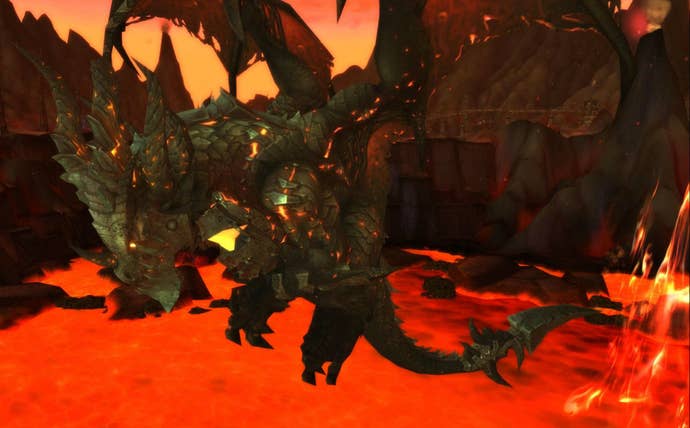

Some WoW fans hate these changes because they make the game easier, but those high-level raids and heroic modes are still there if you're looking for a challenge. Hell, there are even Challenge Modes for dungeons. Blizzard hasn't forgotten about you, hardcore folks. You're just not the only focus.
For me, these changes mean I still play World of Warcraft. I don't log in everyday, but when I do, I drop in 30 minutes and get something done. I craft. I go hunting for stuff to level Archeology. I fish. I level up my pets (Yeah, WoW has a fully-functional, robust Pokemon-style game just crammed in. It's good.) I do a few daily quests. There's always something to do and my time rarely feels wasted.
And leveling up again has been eye-opening, because I can see how Blizzard has grown from a presentation standpoint. Vanilla World of Warcraft relied on text and voice to tell its story, with specific plotlines being stuck within specific areas of certain zones. Burning Crusade had more thought given to story, with plotlines running through entire zones, not just small areas within zones. Wrath of the Lich King introduced phasing, where players see different things in an area depending on what actions they've completed. Cheap in-game cutscenes have improved, or given way to more elaborate pre-rendered cutscenes using in-game assets. Blizzard has made a concerted effort since Wrath of the Lich King to make all players feel like they can experience the lore and stand with or against its best characters; expansions build not only a player's skills, but also their connection to the plots they'll finish in the final raids.
Blizzard has simply become more confident in its storytelling, something that's probably easy to do when you know you have around 7.5 million players lifting you up. Characters like Bolvar Fordragon, Thrall, and Jaina Proudmoore have changed across entire expansions. Mists of Pandaria's final villain, Garrosh Hellscream, was introduced back in Burning Crusade as a young orc unsure about about the reins of leadership. He ended his arc as the power-mad leader of the Horde, a villain so big that the Horde and Alliance join together to take him down.

Starting from level 1 has allowed me to see these changes firsthand. You can see the improvement in the dungeons and the overall flow of each zone; while Cataclysm revamped the old world, Burning Crusade remained a slog in comparison. For me, going from new WoW back to old WoW was like hitting the breaks and coming to a screeching halt. I had to grit my teeth through those levels. There's also a feeling of loss; I remember the neutral cit of Shattrath at its height, when it was the hub for all players in WoW. Now, it's a ghost town. A city built for hundreds occupied by a lonely few. It's similar to the Draenei and Blood Elf cities, which are far enough out of the way that most players don't venture to them.
The overall visual design of the zones has improved, partially because of Blizzard experience and partially because of growing PC power. When playing Final Fantasy XIV, I was struck by the majesty of some of its zones, like the area around the Crystal Tower. But World of Warcraft isn't sitting back and doing nothing; areas like Deepholm, the Jade Forest, or the Dread Wastes show Blizzard really cutting loose on the level design. Deepholm alone is one of the best zones and most awe-inspiring zones I've ever played in any MMO period; it feels like a completely different world, an improved version of what Everquest did with its Planes.
And that's what other MMOs are up against. A game with 10 years of history that still stands up to the latest and greatest other publishers can throw at it. Guild Wars 2 and Secret World scratch an itch for me, and they're free, so I continue to drop in and play them. Final Fantasy XIV is still great, but I just don't have as much invested in it; I'll pop in during big changes and expansions before shuffling back over to Azeroth. As others innovate and add more to the genre, Blizzard takes a look and sees how it can bring it all back around to WoW. World of Warcraft now is nothing like its original incarnation, as the game continues to evolve to compete.

So when I have a few minutes in-between writing, previews, or reviewing all these games, I like to kick back and spend some time with the king. Other games may be doing better in other areas and there's always something new on the horizon, but WoW and I understand each other. Understanding is key in any good relationship. The game's next expansion, Warlords of Draenor, is right around the corner and hopefully it won't ruin that relationship.


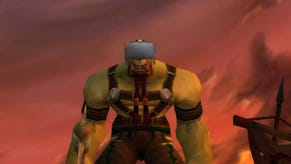
_ddwYK80.png?width=291&height=164&fit=crop&quality=80&format=jpg&auto=webp)

